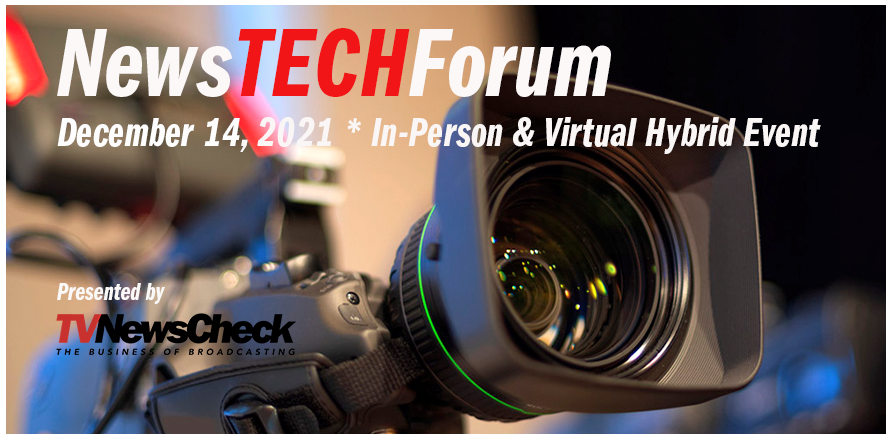On Tuesday, December 14th, Bitcentral’s Chief Operating Officer, Sam Peterson, joined leading executives from The Fox Corporation, Sinclair Broadcast Group, and Tegna to explore a wide range of the industry’s most pressing challenges and exciting technological opportunities.
Moderated by TVNewsCheck’s Contributing Editor Glen Dickson, “The Cloud & the Future of News Production” panel explored the potential of the cloud for news organizations. During this session, some of the industry’s leading technologists shared the steps they’re taking to move more news operations into the cloud or a cloud hybrid environment.
“We are all about giving our customers the ability to work from wherever they are. We do this by giving ubiquitous access to their content, databases/stores of metadata, and production applications from any location, on whatever platform, desktop or mobile. The cloud is a key component of providing this flexibility,” said Sam Peterson as he sat alongside some of the broadcast industry’s leading technologists.
Although the cloud is not a recent phenomenon, its full potential has not been recognized until now. For a media operator, you never know what the day will bring and the crucial element in managing uncertainty is ensuring your operations are flexible enough to adjust to any circumstance. The cloud brings a new level of flexibility in how stories are created and delivered – empowering storytellers to focus on what they do best.
When asked what applications Bitcentral customers have been taking to the cloud, Sam replied: “Content contribution and distribution were some of the first applications. Transcoding and confirming and other operations where dynamic scale is called for are also widely deployed. We see the most movement today in production applications, whether editing or live production. Playout is another interesting area, particularly for ad-hoc, disaster recovery, or other infrequent use cases.”
Here’s a guide to the flexible broadcast systems that Bitcentral offers:
Core News
An elegant and efficient way to handle news production which is optimized to the vital tasks that keep mission-critical newsroom operations running smoothly. It is trusted by over 450 channels across North America and over 1,000 media operations worldwide.
Central Control
Industry-leading on-premise playout and automation solution that seamlessly executes all the processes converging into playout. Automated ingest routines, streamlined verification/validation processes, and intuitive segmenting procedures makes Central Control one of the most advanced and reliable solutions for linear broadcast playout.
Veset Nimbus
A self-service, cloud playout solution for broadcasters and broadcast service providers. Nimbus is designed to rapidly launch event-driven popup channels, disaster recovery channels, and 24/7 channels with lower up-front costs.
FUEL
Our next-generation video and distribution platform for digital publishers and streaming providers. FUEL provides ultra-efficient dynamic automation to manage and publish large volumes of content to web, mobile, streaming applications, social, live & clip syndication, and FAST channel environments, which decreases manual time, effort & cost.
Please don’t hesitate to reach out to us to find out more. Contact us here.
Sales: 949.253.9000
sales@bitcentral.com



